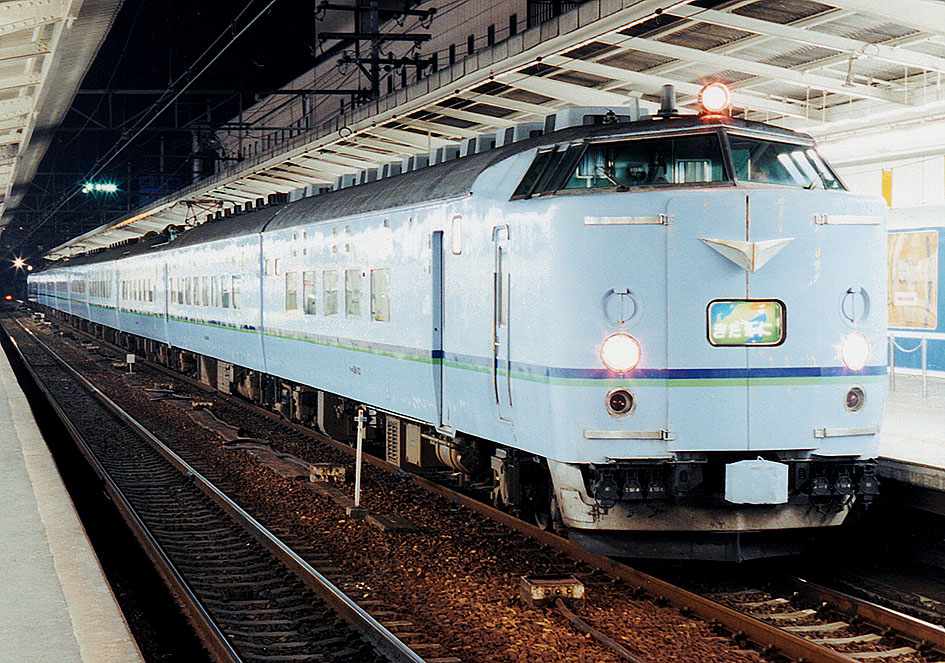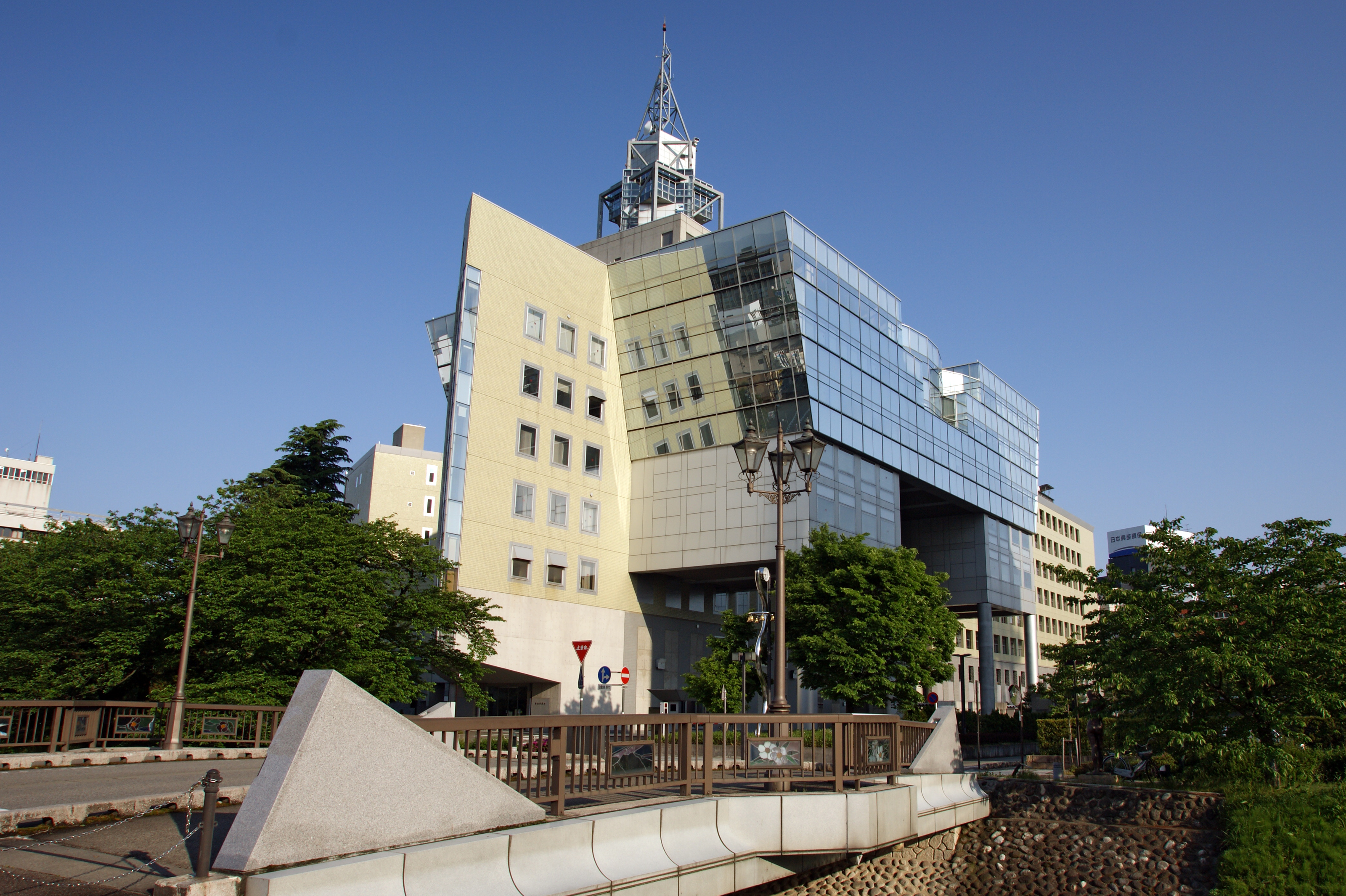|
Kitaguni
The was an overnight train service that operated in Japan from October 1961 until January 2013. Operated by West Japan Railway Company (JR West), it ran between and , taking approximately nine hours northbound and eight hours southbound. Reduced to seasonal operations in March 2012, the service was officially discontinued in January 2013. Route The ''Kitaguni'' ran on the following lines: JR West * Kyoto Line (Tōkaidō Main Line): Osaka - Kyoto * Biwako Line (Tōkaidō Main Line/Hokuriku Line): Kyoto - Nagahama * Hokuriku Line: Nagahama - Naoetsu JR East * Shinetsu Line: Naoetsu - Niigata Service pattern The southbound train originated at Niigata Station at 22:55, arriving in Osaka at 06:49. The northbound service left Osaka at 23:27, terminating at Niitsu Station at 08:10. It then continued as a local train for the final 15-minutes to Niigata. Major stops along the ''Kitaguni'' route included , Kyoto, Maibara, Tsuruga, Fukui, Fukui, Fukui, Kanazawa, Toyama, Toyama, Toya ... [...More Info...] [...Related Items...] OR: [Wikipedia] [Google] [Baidu] |
583 Series
The were limited express electric multiple unit (EMU) train types introduced in 1967 by Japanese National Railways and later operated by East Japan Railway Company (JR East) and West Japan Railway Company (JR West) on the through services express ''Kitaguni'' and other special trains until 2017. The seats of the 581 and 583 series trains could be transformed into three-berth beds, enabling the trains to be used on both daytime and night train services. , just six cars remained in service, operated by JR East and based at Akita Depot for use on additional and charter services. This last trainset was withdrawn in April 2017. Individual car types * KuHaNe 581: Cab car with air compressor and motor-generator (150 kVA) * KuHaNe 583: Cab car with air compressor and motor-generator (210 kVA: beneath the floor) * MoHaNe 580: Motored car with two pantographs (1,500 V DC / 20 kV AC 60 Hz) * MoHaNe 581: Motored car coupled to MoHaNe 580 * MoHaNe 582: Motored car with two panto ... [...More Info...] [...Related Items...] OR: [Wikipedia] [Google] [Baidu] |
Shinetsu Line
The Shinetsu Main Line ( ja, 信越本線, ) is a railway line, consisting of three geographically separated sections, operated by the East Japan Railway Company (JR East) in Japan. It was originally one continuous line connecting and via . Since the opening and later extension of the Hokuriku Shinkansen, sections running in parallel have either been abandoned or transferred to third-sector railway companies. The name of the line refers to the old names for Nagano and Niigata prefectures, Shinano ( ja, 信濃, links=no), and Echigo ( ja, 越後, links=no). The abandoned section through the Usui Pass was famous for its steep 66.7 ‰ (6.67 %) gradient. Sections From 14 March 2015, the line consists of the following three sections. * – (29.7 km): in Gunma Prefecture * – (9.3 km): in Nagano Prefecture * – (136.3 km): in Niigata Prefecture There are three small freight branches; from Echigo-Ishiyama Station to Niigata Freight Terminal, from K ... [...More Info...] [...Related Items...] OR: [Wikipedia] [Google] [Baidu] |
Hokuriku Line
The Hokuriku Main Line ( ja, 北陸本線, ) is a 176.6 kilometer railway line owned by the West Japan Railway Company (JR West) connecting the Maibara Station in Maibara, Shiga, with the Naoetsu Station in Joetsu, Niigata. The section between Kanazawa Station and Naoetsu Station is now operated by third-sector railways. It serves the Hokuriku region on the northern central coast of Honshu, the largest island of Japan, as well as offering connections to the regions of Kansai, Tōkai, Kantō, and Tōhoku. The section of the line between Maibara and Kanazawa is an important transportation artery along the Sea of Japan coast, because the Shinkansen high-speed network has not yet been extended through the Hokuriku region. The Hokuriku Shinkansen was opened on March 14, 2015 between and , therefore the section between the Kanazawa Station and the Naoetsu Station was transformed from a JR line to a third-sector railway; the remaining Shinkansen segment onward to Kansai region is ... [...More Info...] [...Related Items...] OR: [Wikipedia] [Google] [Baidu] |
List Of Named Passenger Trains Of Japan ...
This article contains lists of named passenger trains in Japan. Shinkansen (bullet trains) Daytime trains Limited express (partial list) Express Rapid Night trains Limited express Express Rapid See also * Rail transport in Japan References * JR Timetable, December 2008 * * {{reflist List of named passenger trains of Japan Japan Named passenger trains Luxury trains are a premium travel option designed to offer a comfortable ride and evoke an association with history and heritage. Some luxury trains promote tourism in destinations across a region, while others (such as the Maharajas' Express) ... [...More Info...] [...Related Items...] OR: [Wikipedia] [Google] [Baidu] |
JR West
, also referred to as , is one of the Japan Railways Group (JR Group) companies and operates in western Honshu. It has its headquarters in Kita-ku, Osaka. It is listed in the Tokyo Stock Exchange, is a constituent of the TOPIX Large70 index, and is also one of only three Japan Railways Group constituents of the Nikkei 225 index: the others are JR East and JR Central. It was also listed in the Nagoya and Fukuoka stock exchanges until late 2020. Lines Shinkansen * Hokuriku Shinkansen ( - ) * San'yō Shinkansen * Hakata Minami Line :: Officially not a Shinkansen JR-West's highest-grossing line is the Sanyo Shinkansen high-speed rail line between Osaka and Fukuoka. The Sanyo Shinkansen alone accounts for about 40% of JR-West's passenger revenues. The company also operates Hakata Minami Line, a short commuter line with Shinkansen trains in Fukuoka. Urban Network The "Urban Network" is JR-West's name for its commuter rail lines in the Osaka-Kobe-Kyoto metropolitan area. These ... [...More Info...] [...Related Items...] OR: [Wikipedia] [Google] [Baidu] |
Toyama, Toyama
is the capital city of Toyama Prefecture, Japan, located on the coast of the Sea of Japan in the Chūbu region on central Honshū, about north of the city of Nagoya and northwest of Tokyo. , the city had an estimated population of 415,844 in 176,643 households, and a population density of 335 persons per km2. Its total area was . Overview The city has been designated an environmental model city by the national government for its efforts to reduce the emission of greenhouse gases. Cityscapes File:Toyama Castle (4207284334).jpg, Toyama Castle(2009) File:Anyobo, Toyama, Toyama Prefecture 930-0881, Japan - panoramio (35).jpg, Skyline of Toyama City(2015) File:View from Toyama City Hall, north side.jpg, CBD of Toyama(2018) File:Sogawa st.jpeg, Downtown Sōgawa(2016) File:Fugan unga.JPG, Toyama Kansui park(2016) Geography Located in the middle of its prefecture, Toyama is a seaside city by the coast of the Sea of Japan. Its municipal territory borders with t ... [...More Info...] [...Related Items...] OR: [Wikipedia] [Google] [Baidu] |
Railway Services Discontinued In 2013
Rail transport (also known as train transport) is a means of transport that transfers passengers and goods on wheeled vehicle A vehicle (from la, vehiculum) is a machine that transports people or cargo. Vehicles include wagons, bicycles, motor vehicles ( motorcycles, cars, trucks, buses, mobility scooters for disabled people), railed vehicles ( trains, trams ...s running on rails, which are incorporated in Track (rail transport), tracks. In contrast to road transport, where the vehicles run on a prepared flat surface, rail vehicles (rolling stock) are directionally guided by the tracks on which they run. Tracks usually consist of steel rails, installed on Railroad tie, sleepers (ties) set in track ballast, ballast, on which the rolling stock, usually fitted with metal wheels, moves. Other variations are also possible, such as "slab track", in which the rails are fastened to a concrete foundation resting on a prepared subsurface. Rolling stock in a rail tran ... [...More Info...] [...Related Items...] OR: [Wikipedia] [Google] [Baidu] |
Railway Services Introduced In 1961
Rail transport (also known as train transport) is a means of transport that transfers passengers and goods on wheeled vehicles running on rails, which are incorporated in Track (rail transport), tracks. In contrast to road transport, where the vehicles run on a prepared flat surface, rail vehicles (rolling stock) are directionally guided by the tracks on which they run. Tracks usually consist of steel rails, installed on Railroad tie, sleepers (ties) set in track ballast, ballast, on which the rolling stock, usually fitted with metal wheels, moves. Other variations are also possible, such as "slab track", in which the rails are fastened to a concrete foundation resting on a prepared subsurface. Rolling stock in a rail transport system generally encounters lower friction, frictional resistance than rubber-tyred road vehicles, so passenger and freight cars (carriages and wagons) can be coupled into longer trains. The rail transport operations, operation is carried out by a ... [...More Info...] [...Related Items...] OR: [Wikipedia] [Google] [Baidu] |
Night Trains Of Japan
Night (also described as night time, unconventionally spelled as "nite") is the period of ambient darkness from sunset to sunrise during each 24-hour day, when the Sun is below the horizon. The exact time when night begins and ends depends on the location and varies throughout the year, based on factors such as season and latitude. The word can be used in a different sense as the time between bedtime and morning. In common communication, the word ''night'' is used as a farewell ("good night", sometimes shortened to "night"), mainly when someone is going to sleep or leaving. Astronomical night is the period between astronomical dusk and astronomical dawn when the Sun is between 18 and 90 degrees below the horizon and does not illuminate the sky. As seen from latitudes between about 48.56° and 65.73° north or south of the Equator, complete darkness does not occur around the summer solstice because, although the Sun sets, it is never more than 18° below the horizon at lower ... [...More Info...] [...Related Items...] OR: [Wikipedia] [Google] [Baidu] |
Named Passenger Trains Of Japan
Named may refer to something that has been given a name. Named may also refer to: * named (computing), a widely used DNS server * Naming (parliamentary procedure) * The Named (band), an American industrial metal group In literature: * '' The Named'', a fantasy novel by Marianne Curley * The Named, a fictional race of prehistoric big cats, depicted in '' The Books of the Named'' series by Clare Bell See also * Name (other) * Names (other) * Naming (other) {{disambiguation ... [...More Info...] [...Related Items...] OR: [Wikipedia] [Google] [Baidu] |


